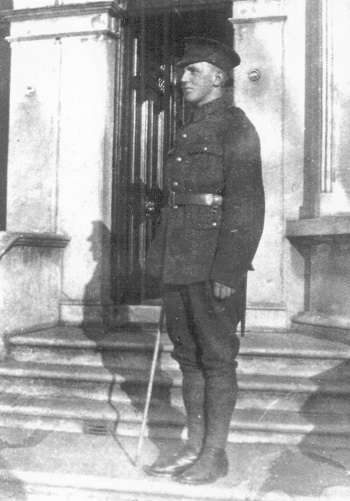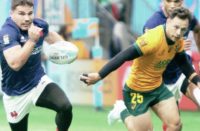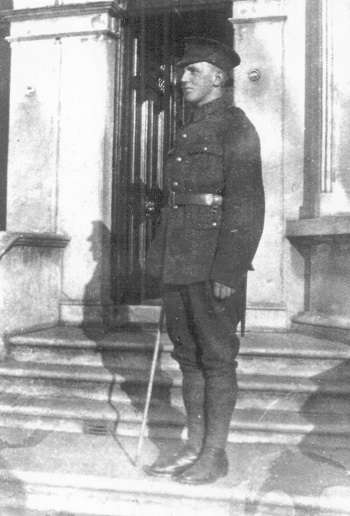
Today we are commemorating the 100th anniversary of the Battle of the Somme which history has generally condemned as the greatest insanity of World War 1. Nearly 60,000 British troops were injured or maimed on the first day with 19,240 making the ultimate sacrifice on that day alone.
The Battle raged in various locations in the Somme valley for 141 days and by November 18, when the rain and mud finally persuaded both sides it was time to call a halt, more than a million Allied and German soldiers had been killed or injured.
Everybody will have their own take on proceedings – then and now – whether it be via family connections or the effect on their community. The experience of the many British sportsmen involved is particularly poignant and valid as they often led the charge and suffered the most immediate consequences. The sporting cream of Britain and the Commonwealth were killed, mutilated and in many cases scarred mentally for the rest of their days – along with all the volunteers from every walk of life.
Donald Bell, star of the Bradford Park Avenue football side, fell at the Battle of the Somme with an early example of heroism being recognised with a posthumous VC and there are many who feel he should have received a second VC after being killed in similarly heroic circumstance on July 10.
England and Yorkshire cricketer Major William Booth – Major was his name not his rank – was killed on the opening day near La Cigny – and South Africa Test star Claude Newberry fell a month later. And, of course, there were hordes of rugby league players and football's many ‘pals regiments'.
Rugby union's involvement was massive. Players were scattered all over the Somme battlefields. On arriving on the Western Front, Aussie Test cap George Pugh, who died at Ypres in 1916, wrote home: “Have met lots of old friends including rugger men. It puts you in the mind of a football tour as they all seem to be here. No omissions by the selectors on this trip!” Mobbs Own – the sporting regiment raised by former England captain Edgar Mobbs – fought at the Somme while the big county regiments such as the Northumberlands, the Devonshires and Gloucesters were groaning with rugby players.
Meanwhile, Stephen Cooper, in his remarkable account of Rosslyn Park's involvement in World War 1 – The Final Whistle – lists 13 known club members being killed at the Somme while the toll at Harlequins was similar with 11 playing members reported killed in action at the Somme. That level of loss will have been replicated at every senior and junior club throughout Britain and Ireland.
Most of their names and deeds are little known although elsewhere on these pages I highlight those of James Turnbull VC and William McFadzean VC. What we do know a little more about, by dint of their ‘celebrity' as Test rugby players, is the stories of the 15 international rugby players who died at the Battle of the Somme.
Former Scotland and Cambridge University captain Rowland Fraser, a hard- tackling forward, perished on that very first day. A captain in 6 Rifle Brigade, he was initially badly injured by machine gun fire but managed to crawl to a bomb hole where his orderly started to dress his wounds. Fraser might conceivably have survived but was then killed instantly by shrapnel from an exploding shell nearby.
Fraser was one of many soldiers – Bell was another – who had taken advantage of recent leave back home in Britain to get married. Fraser married Ms Dorothi Ross on June 20, returned to France the following day and was killed on July 1, 12 days after walking up the aisle.
Another early fatality was legendary Cardiff and Wales wing Johnny Williams – 17 tries in 17 internationals and three Triple Crown titles to his name – who died of his wounds on July 12, five days after leading the charge at Mametz Wood in which the 38th (Welsh) Infantry Division were deeply involved. Also killed at Memetz Wood was Williams' former Wales colleague Richard ‘Dick' Thomas, the long-time police constable at Mountain Ash until he joined up in 1915.
Blackheath's Lawrence Pillman was the younger brother of renowned England star ‘Cherry' Pillman but was beginning to make his own mark on the game when War broke out, having made his Five Nations debut against France in Paris in April, 1914.
Come the War, he was quickly promoted to lieutenant in the 10th Battalion of the Queen's Own where he was effectively the bombing officer, one of the most perilous jobs of all. Pillman was shot by a sniper returning from a night operation laying bombs on July 9 in the Armentieres area and died a few hours later.
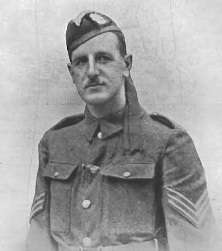
Maesteg's David Watts was a member of the ‘Terrible Eight', the Welsh pack which earned a reputation in 1914 for its uncompromising play, particularly in a notably fierce game against Scotland.
He joined the King's Shropshire Light Infantry and rose to the rank of corporal before being killed in fierce fighting at Bezentine Ridge. The following day burly Transvaal forward Toby Mol, who had been capped for South Africa against the 1910 Lions, was killed at nearby Bazentine-le-Petit fighting with the Royal Leicestershire Regiment.
Another killed in July, at Delville Wood, was former Scotland scrum-half Eric ‘Puss' Milroy who toured with the Lions in that 1910 series. Milroy was a lieutenant in the Black Watch and, like scores of thousands of soldiers involved in battle, there were no remains to bury, no closure for loved ones. For years his mother would leave a light on in the front room of the family house to guide her son home, a gesture many other grieving families replicated. Just in case.
The small village of Guillemont witnessed some of the most savage fighting of all and on August 9 two England internationals and firm friends – John King and Noel Slocock – were killed in the same attack. King was a diminutive and flinty Yorkshire farmer and regular at hooker for England – 12 internationals in three seasons – who joined up immediately with the Yorkshire Hussars, reportedly leaving his three sisters to get the crop in.
Frustrated at a lack of action, he used his friendship with the well-connected Slocombe to engineer a transfer to the London Scottish Regiment and then the Liverpool (Scottish) Regiment and it was while fighting with the Scottish that he was killed in action.
Slocombe, who had captained England in 1908 as a 21-year-old, was 29 when he died leading his men in attack. He had returned from the USA to volunteer for military service after his job as a cotton trader had seen him set up home in Savannah, Georgia.
Early in his rugby career, in 1906, he had been involved in a classic mix-up when, after impressing playing for the North in their prestigious match against the South, he was confidently tipped to make his England debut against the touring Springboks. That indeed was the intention of the selectors who nonetheless managed to send their invitation, by mistake, to Arnold Alcock, a medical student at Guys and a player of much more modest ability. Alcock duly made his one and only England appearance.
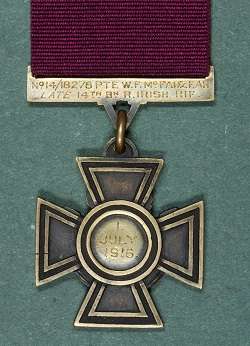
The battle continued apace in September, the death toll remorseless. The fight for Guillemont was still raging and on September 3 it claimed Wales fly-half Horace Thomas, a choral scholar and Cambridge Blue. Thomas had become something of a cause celebre in 1912 when he was picked for Wales to play against the Springboks. The policy at the time was that no Welsh player outside of the Principality be allowed to play unless they were a member at London Welsh. Which Thomas wasn't.
He was a talent, though, and after the selectors had watched him inspire Cambridge to their first win over Oxford in seven years, the WRU went against their own edict and picked him anyway. A sort of early Gatland's Law. In the Test itself he had appeared to win the game with a late dropped goal but the referee signalled otherwise.
The remarkable Rev Rupert Inglis was an Army chaplain and an England rugby international of 30 years standing when he found himself at the Somme. At the age of 51 he had volunteered, feeling it was morally unacceptable for him to preach from the pulpit asking young men in his Basingstoke parish to step forward unless he was willing to do likewise.
Once on the Western Front, his duties extended way beyond the spiritual wellbeing of his regiment. Much of the time Inglis volunteered for stretcher parties and when the wounded had been retrieved he acted as a surgeon's assistant in the primitive field hospitals.
Inglis met his end near Ginchy on September 18 recovering wounded colleagues from no-man's land. As with Fraser on the opening day, he had survived an initial wound and was being dressed when a second shell exploded nearby and killed him outright.
The following day saw All Blacks wing Frank Wilson lose his battle for life after being severely injured during fighting on September 17 and then on September 21 a second New Zealander was lost when Stanley “Bobby” Black was killed serving with the Canterbury Regiment.
Another Antipodean made the ultimate sacrifice as the battle finally drew to a close in November when Herbert Jones was killed at Flers where, for the first time, the Allied troops unveiled their new secret weapon – the tank. They had shipped 50 over to France but only 24 were in working order and with a top speed of 3kph they were of limited use though they had a certain shock value.
Jones was meant to be going on leave the following day.
The final Test player to be killed at the Somme was Alfred Maynard, a Naval man, who was killed at Beaumont Hamel on November 13. Maynard, England's hooker in the 1914 Five Nations, had
survived all the rigours of the Gallipoli campaign but his luck ran out when Naval detachments were drafted onto the Western Front to help the war on land.
